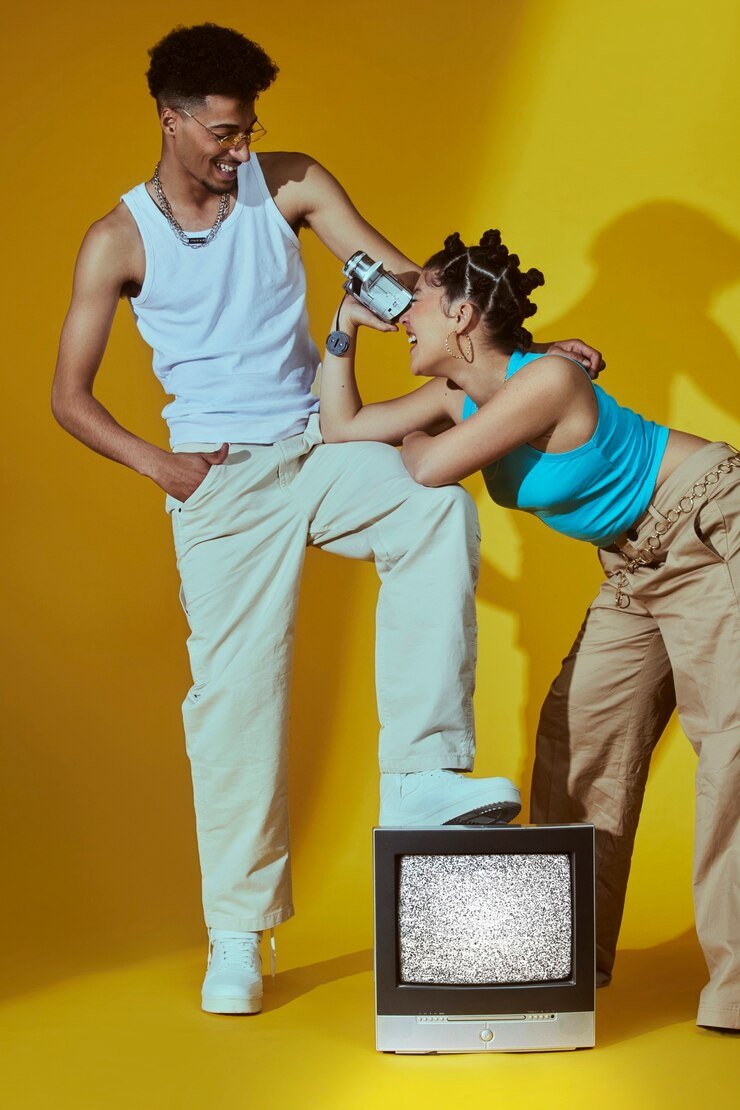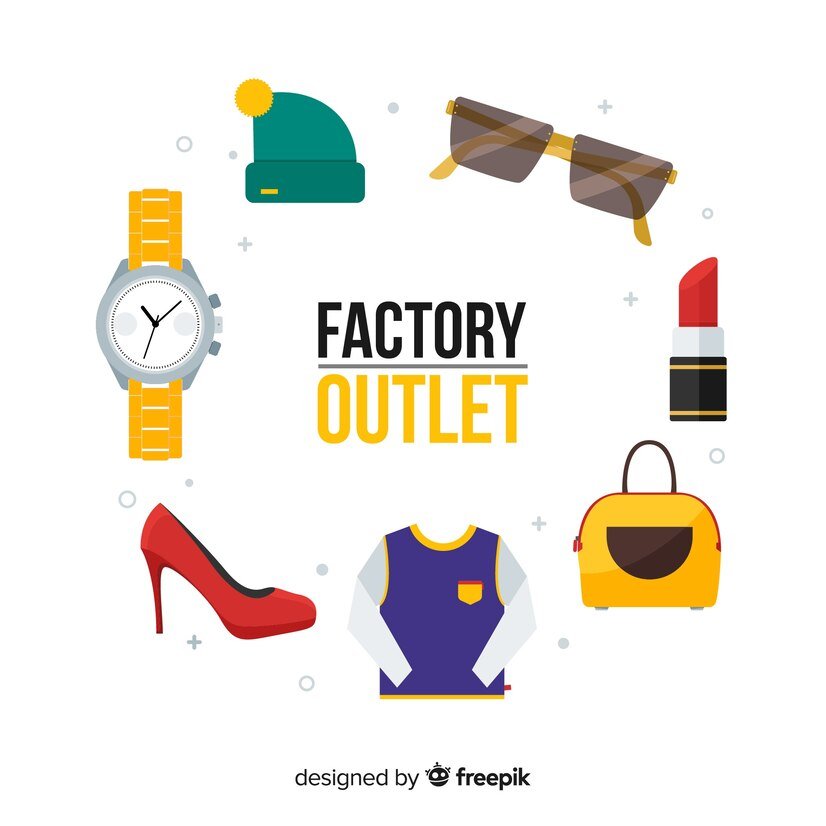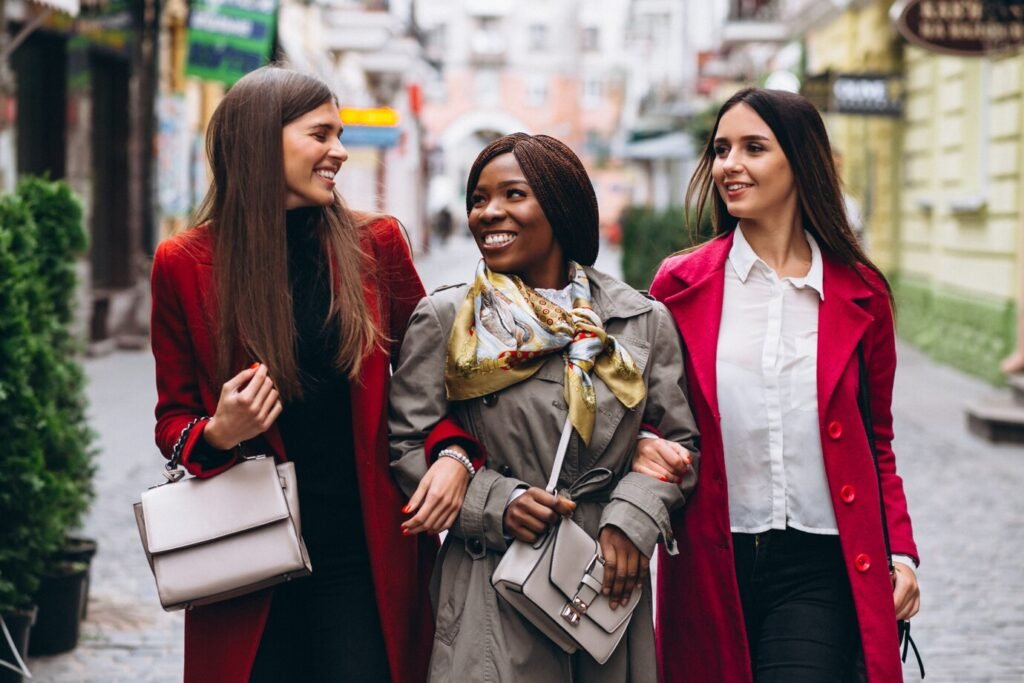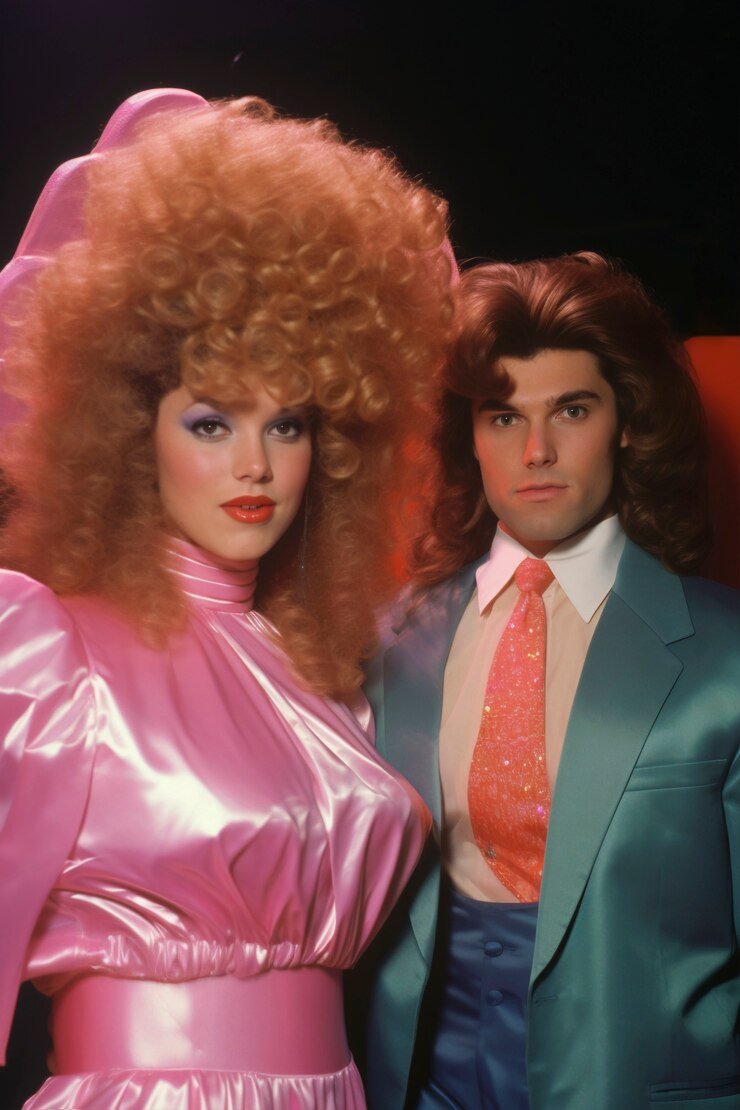Introduction of 1980s Fashion
As you walk down a bustling street in the heart of an 1980s Fashion urban landscape, the air buzzes with energy. Neon signs flicker against the backdrop of twilight, illuminating faces adorned with bold makeup and vibrant hair. The rhythmic beats of synthesizers spill from nearby shops, while laughter and conversation create a lively soundtrack. Everywhere you look, people express themselves through an eclectic mix of fashion—oversized jackets, brightly colored leggings, and chunky jewelry—all distinct and unique. This was the essence of 1980s fashion, a dazzling explosion of creativity that forever changed the landscape of personal style.
The 1980s were a time of significant social and cultural transformation, reflected powerfully in the decade’s fashion. From the rise of the corporate woman in power suits to the casual yet flamboyant aesthetic of rock and pop culture, 1980s fashion revolutionized personal expression through bold styles, iconic trends, and cultural influences. This article will delve into the key trends that defined this vibrant decade, the accessories that made statements, the cultural influences that shaped it all, and the lasting legacy that continues to resonate today.
Key Trends in 1980s Fashion

A. Neon Colors
One of the most defining characteristics of 1980s fashion was its vibrant color palette, particularly the pervasive use of neon. The decade embraced electric pinks, greens, yellows, and oranges, turning everyday outfits into eye-catching spectacles. This bold use of color was heavily influenced by pop culture, particularly music videos and the rise of MTV. Artists like Cyndi Lauper and Madonna used these hues to not only capture attention but also to convey their unique identities.
MTV, launched in 1981, was a game changer. It brought music videos into the mainstream, showcasing not just songs but also the artists’ distinct styles. The visual nature of the medium allowed fashion trends to spread rapidly, making neon a staple in many wardrobes. Iconic music videos like “Girls Just Want to Have Fun” and “Material Girl” introduced viewers to a kaleidoscope of colors, which soon spilled over into everyday fashion.
Power Suits
The 1980s also marked the rise of the corporate woman, and with it, the emergence of the power suit. Characterized by structured silhouettes, shoulder pads, and bold patterns, these suits symbolized a shift in societal norms as women began to break into the male-dominated corporate world. Designers like Donna Karan and Thierry Mugler became influential figures, creating styles that combined femininity with authority.
Shoulder pads became synonymous with empowerment, giving an exaggerated sense of stature to the wearer. This trend extended beyond just work attire, influencing casual and evening wear as well. The power suit was not merely clothing; it was a statement, a declaration of strength and ambition.
Denim Mania
Denim took on a life of its own during the 1980s, with acid-wash jeans and oversized jackets becoming must-have items. The popularity of denim was fueled by music, particularly rock and punk genres, where artists like Bruce Springsteen and Madonna donned denim as a symbol of rebellion and individuality. Acid-wash jeans became particularly iconic, often paired with colorful tops and oversized blazers for a quintessential 80s look.
The versatility of denim allowed it to transcend subcultures, appealing to a broad audience. From the punk rock scene to suburban youth, denim represented freedom and casual cool. It was not just about the fabric; it was about the attitude it embodied.
Athletic Wear
The 1980s also witnessed the rise of athletic wear as a fashion statement. Brands like Nike and Adidas became household names, as fitness culture gained momentum through the popularity of aerobics and workout videos. Icons like Jane Fonda popularized the concept of fitness fashion, promoting not just exercise but also the idea that looking good while working out was essential.
Tracksuits, leg warmers, and headbands became part of everyday attire, merging comfort with style. This trend highlighted the importance of fitness in 80s culture, as people embraced a lifestyle that valued health and physical appearance.
Iconic Accessories

Statement Jewelry
No 80s outfit was complete without statement jewelry. Chunky necklaces, oversized earrings, and layered bangles became essential accessories, often worn in abundance. The more, the merrier was the rule of thumb when it came to accessorizing, and bold jewelry allowed individuals to express their unique personalities.
Designers and brands jumped on this trend, producing eye-catching pieces that complemented the vibrant clothing of the time. The influence of celebrities, who often wore dramatic accessories in music videos and public appearances, further popularized these styles.
Footwear Trends
Footwear in the 1980s was equally bold and varied. High-top sneakers, particularly popularized by athletes like Michael Jordan, became a staple among youth culture. These shoes not only offered comfort but also a sporty aesthetic that complemented the casual styles of the decade.
Leg warmers, originally designed for dancers, transcended their intended purpose and became fashionable footwear accessories, often worn over leggings or jeans. This unique combination of practicality and style epitomized the 80s spirit.
Hair Styles
Hair was perhaps the most expressive element of 1980s fashion. The bigger, the better was the mantra of the decade, with hairstyles reaching new heights—literally. From voluminous curls to mohawks, the variety was endless. The perm became especially popular, giving hair a crimped, full-bodied look that was sought after by both men and women.
Bold colors also made their way into hair fashion, with people experimenting with bright dyes and highlights. Hairstyles became an extension of personal identity, reflecting individualism and creativity in a visually striking manner.
Makeup Trends
Just as vibrant as clothing and hair, makeup in the 1980s embraced bold colors and dramatic styles. Bright eyeshadows in electric blues, hot pinks, and vivid greens adorned eyelids, while heavy eyeliner and defined brows completed the look. Blush was applied generously to create a sun-kissed glow, and lips were often painted in striking shades of red or fuchsia.
Makeup artists and brands began to promote the idea that makeup was a form of self-expression, encouraging individuals to play with color and technique. This liberated approach to beauty aligned perfectly with the decade’s overall ethos of boldness and individuality.
Cultural Influences on Fashion

Music and Pop Culture
The influence of music on 1980s fashion cannot be overstated. The launch of MTV not only changed the music industry but also transformed how fashion was marketed and consumed. Music legends like Madonna, Prince, and Michael Jackson became style icons, using their platforms to showcase trends that fans eagerly adopted.
Madonna’s ever-changing style, from lace gloves to layered necklaces, encouraged a culture of experimentation and self-expression. Meanwhile, Prince’s flamboyant outfits blurred gender lines, promoting a sense of fluidity in fashion that resonated with fans.
Film and Television
Film and television also played pivotal roles in shaping 1980s fashion. Movies like Flashdance and The Breakfast Club became cultural touchstones, introducing styles that reflected the youth’s aspirations and struggles. The iconic scene in Flashdance, where Jennifer Beals dons a cut-off sweatshirt and leg warmers, sparked a craze that influenced workout attire and casual fashion.
TV shows like Dynasty showcased the glitzy side of 80s fashion, with characters donning extravagant gowns and lavish accessories. These visual mediums were instrumental in popularizing specific looks, solidifying the decade’s style in the collective consciousness.
Subcultures
The 1980s were a melting pot of subcultures, each with its unique fashion styles that contributed to the overall diversity of the decade. Punk culture, with its ripped clothing, safety pins, and combat boots, pushed back against mainstream fashion, offering a more rebellious aesthetic. Bands like The Sex Pistols and The Clash embodied this spirit, influencing a generation of youth.
Goth culture emerged as another counterpoint, characterized by dark, dramatic clothing, heavy makeup, and an overall sense of mystery. The New Wave movement introduced a blend of punk and pop, with artists like Duran Duran and Blondie embracing vibrant colors and avant-garde styles.
The Legacy of 1980s Fashion

Revival in Modern Fashion
The influence of 1980s fashion is far from a relic of the past; it continues to resurface in modern fashion. Designers and brands regularly draw inspiration from the boldness of the decade, incorporating neon colors, oversized silhouettes, and statement accessories into contemporary collections. Fashion weeks around the world often feature nods to 80s styles, showcasing the enduring appeal of this vibrant era.
Street style has also embraced elements of 80s fashion, with vintage shops and thrift stores catering to those seeking to incorporate nostalgic pieces into their wardrobes. The rise of social media has further propelled this revival, as influencers and fashion enthusiasts showcase their takes on 80s-inspired looks, encouraging others to experiment with bold styles.
Lasting Impact on Style
The legacy of 1980s fashion goes beyond mere aesthetics; it has fundamentally influenced how we view personal expression in clothing. The decade’s emphasis on individuality paved the way for future fashion movements that celebrate diversity and self-identity. Today, fashion is increasingly seen as a form of self-expression, allowing individuals to showcase their unique personalities through their clothing choices.
The impact of 1980s fashion is also evident in the continued popularity of certain styles. High-waisted jeans, crop tops, and chunky sneakers are just a few examples of trends that have made a comeback, demonstrating that fashion is cyclical and often looks to the past for inspiration.
Conclusion
The vibrant world of 1980s fashion remains an iconic chapter in the history of style




